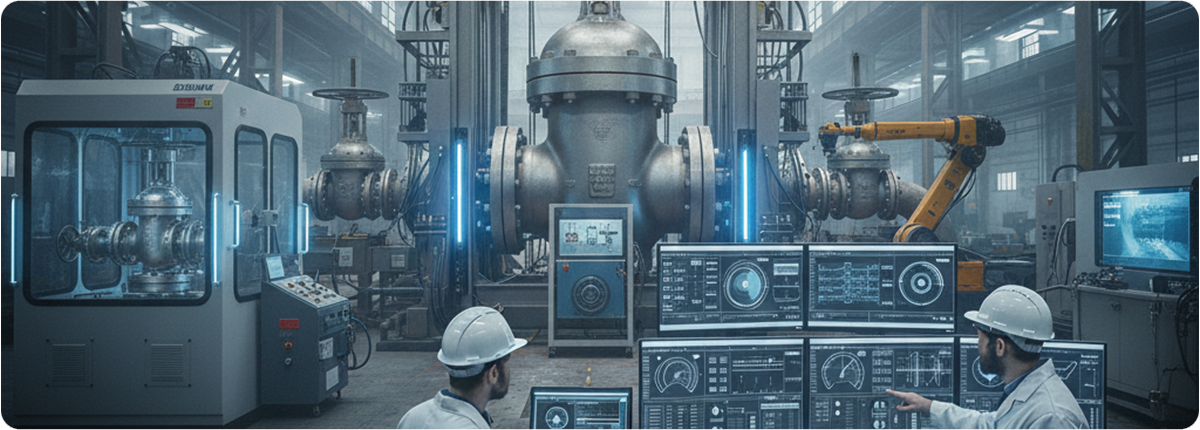Valve testing is a cornerstone of industrial safety and performance assurance. In Europe, strict valve test standards govern how manufacturers design, test, and certify valves before they are delivered to end users. Unlike generic quality control, these standards—such as EN 12266, ISO 5208, and EN 12516—define precise test procedures for hydrostatic strength, tightness, leakage classes, and pressure-temperature ratings. Understanding these standards is essential for industries ranging from water treatment to chemical processing, energy, and pharmaceuticals.

EN 12266 – THE EUROPEAN BENCHMARK FOR VALVE TESTING
EN 12266-1 and EN 12266-2 are widely recognized as the core European standards for valve testing. They define test procedures for both metallic and plastic valves, covering hydrostatic and pneumatic tests, seat tightness, and functional verification.
Key Test Categories in EN 12266:
- Shell strength test (Hydrostatic): The valve body is subjected to a pressure 1.5 times the maximum allowable working pressure (PN rating).
- Seat leakage test: Defines Leakage Rate Categories A to D, with Rate A requiring no visible leakage.
- Backseat and closure tests: Ensures reliable sealing when the valve is fully closed or in reverse flow.
ISO 5208 – INTERNATIONAL LEAKAGE STANDARD
ISO 5208 is often used alongside EN 12266 and specifies allowable seat leakage rates for industrial valves.
Leakage Rate Examples for Class A:
- DN ≤ 50: Air/Nitrogen – Zero visible bubbles.
- DN 200: Water – 0.5 ml/min.
- DN 600+: Water – 1.0 ml/min per 25 mm seat diameter.
EN 12516 – PRESSURE-TEMPERATURE RATINGS
EN 12516 defines the pressure-temperature relationship of valves to ensure safe operation. It covers cast iron, steel, copper alloys, and plastic valves, requiring derating at higher temperatures.
COMPARISON WITH AMERICAN STANDARDS (API & ASME)
EN standards are dominant in Europe, while American standards like API 598 and ASME B16.34 are used in oil, gas, and power industries.
Comparison Table:
- Leakage classification: EN Rate A–D / API uses drop-based acceptance.
- Test media: EN uses water or air / API allows kerosene as well.
- Safety margin: 1.5 × PN rating / 1.5 × pressure class rating.
- Market preference: EN for EU utilities, chemicals, pharma / API for Oil & Gas USA.
APPLICATIONS OF EUROPEAN STANDARDS IN INDUSTRY
- Water treatment plants: EN 12266 Rate A certification.
- Chemical processing: Ball and globe valves tested per ISO 5208.
- Pharmaceutical industry: Hygienic valves under EN standards.
- Power generation: High-pressure valves tested under EN 12516.
CONCLUSION
European valve testing standards (EN 12266, ISO 5208, EN 12516) provide a rigorous framework to ensure safety, performance, and environmental compliance. They often impose stricter leakage limits compared to American standards, especially for water and environmentally sensitive applications.
